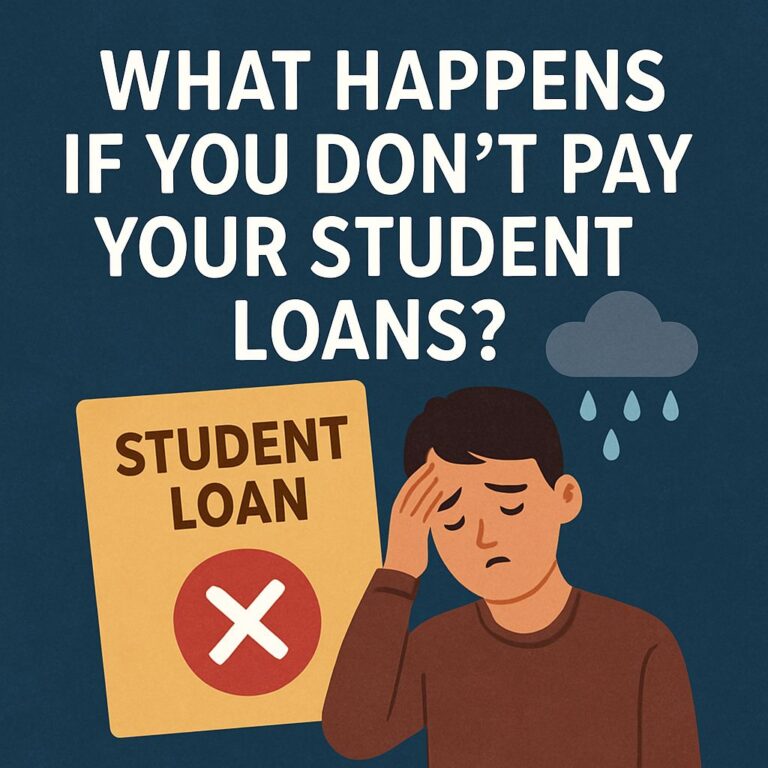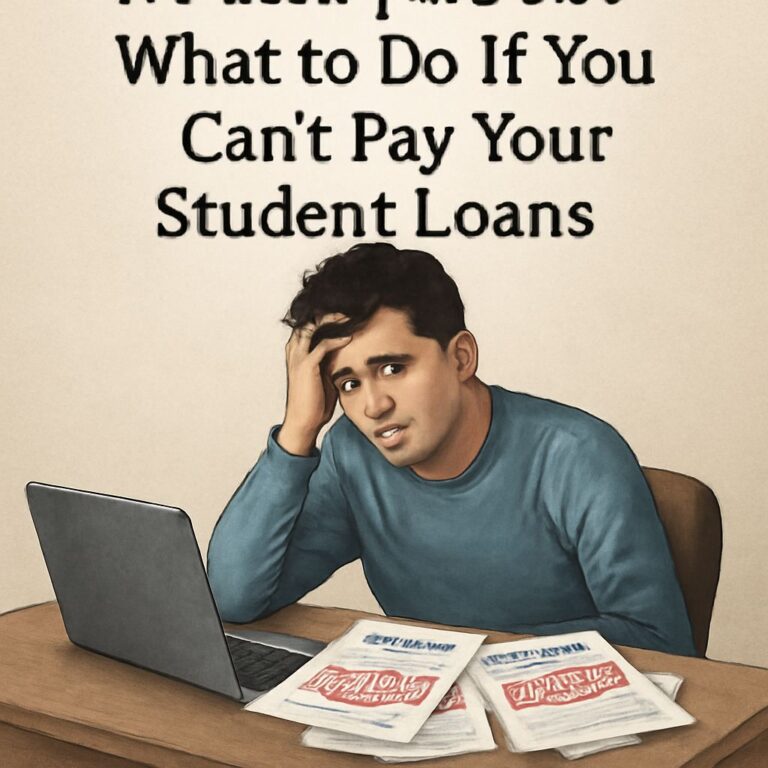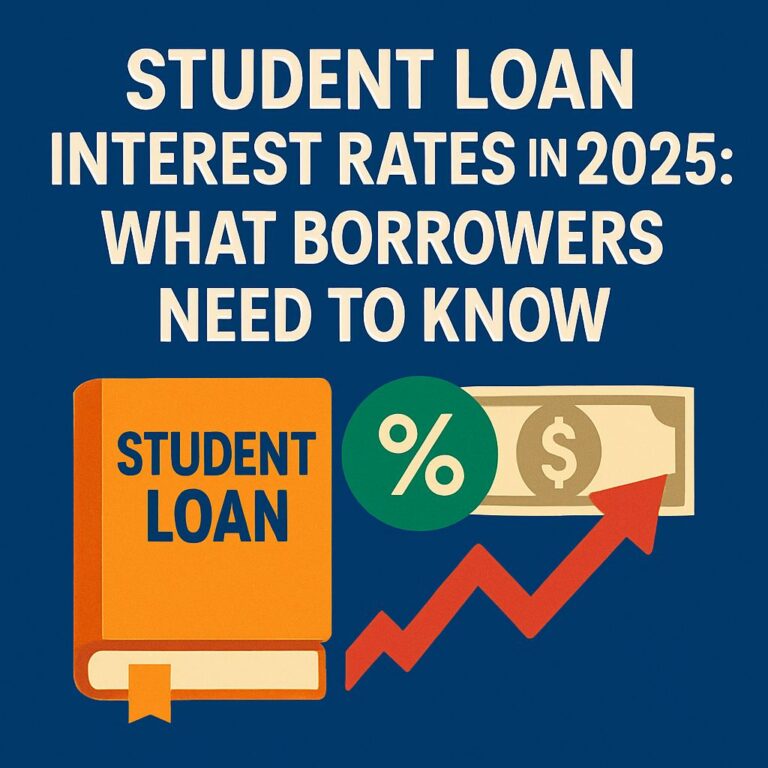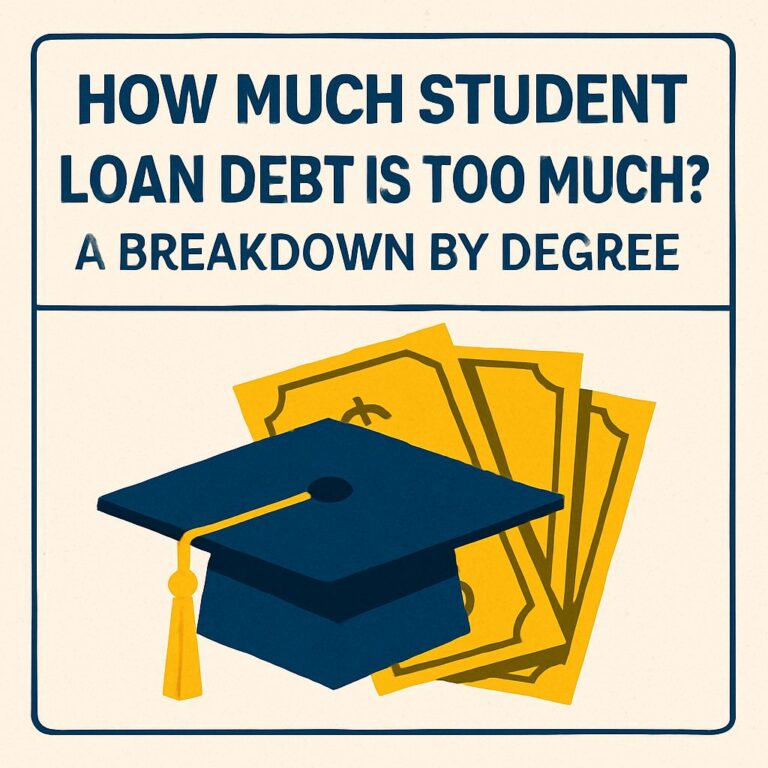The Truth About Student Loan Forgiveness in 2025: What You Should Know
Over the past few years, student loan forgiveness has become one of the most talked-about — and misunderstood — topics in the United States. It’s been debated on Capitol Hill, dissected on TikTok and Twitter, and has fueled a mix of hope and confusion for millions of Americans carrying the weight of student debt.
In 2025, student loan forgiveness is no longer just an idea — it’s a real, evolving set of programs and policies that can actually help certain borrowers. But here’s the thing: it’s not a magic eraser. Not everyone qualifies, and even those who do need to follow strict guidelines.
Whether you’ve just graduated or have been repaying loans for years, it’s critical to separate fact from fiction. This article breaks down what’s really happening with student loan forgiveness in 2025, who qualifies, what programs are available, and how to avoid falling for scams.
🎓 Why Student Loan Forgiveness Exists
The U.S. student loan system was designed to help people access higher education — but over time, it’s turned into a massive burden. Today, more than 43 million Americans owe over $1.7 trillion in student debt. Many borrowers are making payments but seeing their balances grow because of interest.
Student loan forgiveness was introduced to:
-
Encourage public service work
-
Ease the financial strain of low-income borrowers
-
Fix the broken promise of education leading to opportunity
The concept is simple: if you work in certain fields, make consistent payments, or meet hardship criteria, you may qualify to have some or all of your student debt forgiven.
✅ The Main Forgiveness Programs Available in 2025
As of this year, the most prominent federal student loan forgiveness programs include:
1. Public Service Loan Forgiveness (PSLF)
If you work in government or a nonprofit organization, you may qualify for PSLF — one of the most powerful forgiveness programs available.
Requirements:
-
Must have federal Direct Loans
-
Be on an Income-Driven Repayment (IDR) plan
-
Work full-time for a qualifying employer
-
Make 120 qualifying monthly payments (about 10 years)
Updates in 2025:
-
The PSLF program has permanently improved its tracking system. Borrowers now get clearer updates about qualifying payments.
-
Some previously ineligible borrowers have been reconsidered due to the IDR Account Adjustment, which credits older payments.
⚠️ Important: If you work in education, healthcare, or the military — PSLF may apply to you. Check your employer’s eligibility on studentaid.gov.
2. Income-Driven Repayment (IDR) Forgiveness
This is not profession-based, making it more accessible.
If you’ve been making payments on an IDR plan (like SAVE, PAYE, IBR, or ICR) for 20–25 years, you may qualify for full forgiveness of your remaining balance.
What’s new in 2025:
-
The new SAVE Plan (launched in 2023) has made IDR payments much more affordable.
-
The IDR Adjustment means some borrowers will receive retroactive credit toward forgiveness, even for months in forbearance or deferment.
Quick Facts:
-
Forgiveness after 20 years for undergraduate loans
-
Forgiveness after 25 years for graduate loans
-
Payments as low as $0 for low-income borrowers
🧠 Pro Tip: Log in to your loan dashboard on studentaid.gov and see how many qualifying months you have toward IDR forgiveness.
3. Teacher Loan Forgiveness
If you’re a K–12 teacher, you could qualify for up to $17,500 in forgiveness after five years of teaching in a low-income school or educational service agency.
Requirements:
-
Must have federal Direct or FFEL loans
-
Teach full-time for five consecutive years
-
Be in a qualifying subject area (e.g., math, science, special ed)
Many educators combine this program with PSLF — but be careful, as only certain timeframes count for both.
4. Borrower Defense to Repayment
If your college misled you or engaged in misconduct, you may be eligible for full forgiveness through the Borrower Defense program.
This typically applies to borrowers who:
-
Attended for-profit schools
-
Were given false promises about employment, salaries, or accreditations
Thousands of students from institutions like Corinthian Colleges, ITT Tech, and others have already had their loans discharged under this rule.
5. Total and Permanent Disability (TPD) Discharge
If you’re unable to work due to a disability, you may qualify for complete loan forgiveness under TPD.
In recent years, the process has been streamlined with data sharing between the Social Security Administration (SSA) and the Department of Education.
🧾 What About Biden’s Mass Loan Forgiveness?
President Biden’s original plan to cancel $10,000–$20,000 in federal loans for most borrowers was struck down by the Supreme Court in 2023.
But that didn’t stop the administration from finding other routes. Since then:
-
Over 4 million borrowers have received some forgiveness through targeted programs.
-
New forgiveness rules and adjustments (like the IDR fix) are benefiting more borrowers in 2025.
⚠️ Reality Check: There is no automatic $10K forgiveness for everyone right now. Every current forgiveness program has specific eligibility rules.
🚨 Avoiding Student Loan Forgiveness Scams
Scammers love to prey on people desperate for debt relief. If you’ve searched “student loan forgiveness” online, you’ve probably seen ads promising “instant forgiveness” or “complete cancellation for a fee.”
Don’t fall for it.
Here’s how to spot a scam:
-
They ask for upfront fees
-
They claim to have “exclusive access” to government programs
-
They ask for your FSA login or SSN
-
Their website isn’t a .gov or affiliated with the Department of Education
Remember: All federal student loan forgiveness programs are 100% free to apply for.
Stick with trusted sources like:
-
Your official loan servicer
-
Nonprofit counseling services
📝 How to Apply for Forgiveness
Applying for student loan forgiveness depends on the program:
For PSLF:
-
Use the PSLF Help Tool on studentaid.gov.
-
Submit your Employment Certification Form (ECF) every year.
For IDR Forgiveness:
-
Make sure you’re enrolled in an eligible IDR plan (SAVE is best for most).
-
Track qualifying payments via your account dashboard.
For Teacher Forgiveness:
-
Submit the Teacher Loan Forgiveness Application after your five years of service.
For Borrower Defense:
-
Apply at studentaid.gov/borrower-defense
✨ What Forgiveness Could Mean for Your Future
Having your student loans forgiven isn’t just a financial win — it’s a life-changing moment.
Imagine:
-
Buying a home without $500 in monthly debt dragging you down
-
Saving for retirement instead of servicing interest
-
Gaining emotional peace and clarity
Student loan forgiveness isn’t a handout — it’s a course correction in a system that often punishes the very people it was supposed to uplift.
🧠 Final Thoughts
Student loan forgiveness in 2025 isn’t a myth — it’s real, but it’s not universal. Whether you qualify depends on your job, income, loan type, and payment history. The government is actively working to improve access and fix broken systems, but it’s still up to you to take action.
If you’re unsure where to start:
-
Log into studentaid.gov
-
Use the Loan Simulator
-
Check your repayment plan and forgiveness progress
Knowledge is power — especially when it comes to breaking free from debt.




